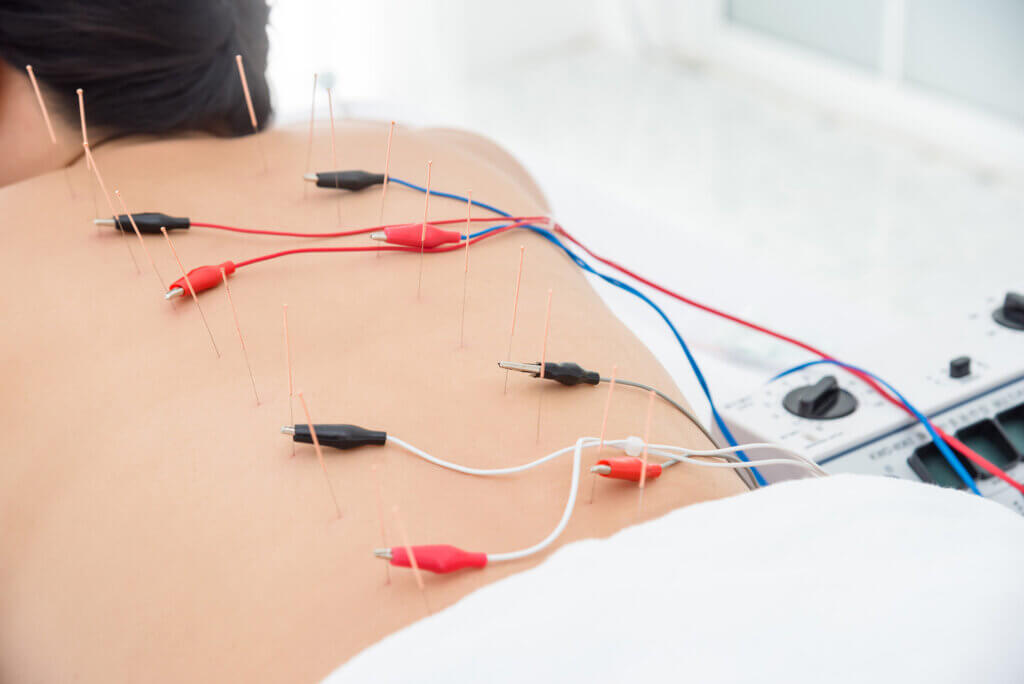
Dry needling is an invasive and safe technique whose physical agent is the mechanical action provoked by a needle, which passes through different tissues (skin, fat) until it reaches the muscle. Traditional dry needling consists of rapidly inserting and withdrawing the needle, provoking the so-called local spasm response. This procedure is somewhat painful and can cause discomfort in the following days.
So today there is an alternative that produces the same benefits and eliminates the pain and discomfort afterwards: adding an electrical current that passes through the needle and into the muscle where it stimulates it.
But what exactly does the needle stimulate? Its use is recommended when treating the so-called trigger points, which are small nodules (bulky, tense, sensitive and hyperirritable) found within a tense band of muscle, which are the cause of some dysfunctions that can cause pain and loss of normal joint range of motion. So what are the benefits of dry needling?
- Elimination of trigger points
- Improvement of the body’s functionality
- Normalisation of the treated structures
- Decrease in pain and discomfort
- Increase in the performance of daily tasks and sporting improvement
- Increase in the range of movement
Trigger points are painful on compression, can cause pain referred to another body area, motor dysfunction of the structures and functional impotence. They are caused by lifestyle overloads, daily routine, sports trauma, emotional stress, illnesses, etc. Basically, the aim of dry needling is to find those trigger points existing within the affected muscle by palpation, and then introduce a needle into them and thanks to its own mechanical action, added to the electric current, manage to eliminate the trigger points.
This technique must be carried out by qualified professionals with experience in the field of invasive techniques, thus avoiding discomfort after the puncture or other possible side effects.
Written by Eduardo García Oliva, Physiotherapist.


